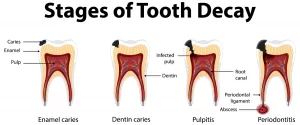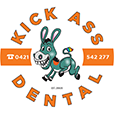What Does Dental Sepsis Feel Like? Understanding the Symptoms and Risks
Introduction
Dental sepsis, also known as a dental abscess or tooth infection, is a serious oral health condition that can cause significant discomfort and potential complications if left untreated. This condition occurs when bacteria invade the dental pulp, which is the innermost part of the tooth containing blood vessels, nerves, and connective tissue. As the infection progresses, it can lead to the formation of a pocket of pus known as an abscess. Understanding the symptoms and risks of dental sepsis is crucial to seek prompt treatment and prevent further complications.
The Causes of Dental Sepsis
Dental sepsis typically occurs due to untreated tooth decay or cavities. When cavities are left untreated, bacteria can penetrate the enamel and dentin layers of the tooth and reach the dental pulp. The dental pulp provides an ideal environment for bacterial growth, leading to an infection. Additionally, dental sepsis can result from dental trauma that causes damage to the tooth, allowing bacteria to enter and cause an infection.
Common Symptoms of Dental Sepsis
Tooth Pain: One of the primary symptoms of dental sepsis is severe, persistent tooth pain. The pain may be throbbing and can radiate to the jaw, ear, or neck. The discomfort often worsens when biting or chewing.
Swelling: Dental sepsis can cause swelling in the face, cheeks, or lymph nodes of the neck. The affected area may appear red and feel tender to the touch.
Fever: In some cases, dental sepsis can lead to a fever, indicating that the body is fighting the infection.
Bad Breath: An unpleasant odor from the mouth, despite maintaining good oral hygiene, can be a sign of dental sepsis.

Pus Drainage: If an abscess forms, there might be a foul-tasting discharge of pus near the infected tooth. This drainage can occur spontaneously or when pressure is applied to the area.
Sensitivity to Temperature: The infected tooth may become sensitive to hot or cold foods and beverages.
General Malaise: Individuals with dental sepsis might experience a sense of overall discomfort and malaise, often accompanied by fatigue.
Risks and Complications
Ignoring dental sepsis can have serious consequences, as the infection can spread to other parts of the body through the bloodstream. Some potential complications of untreated dental sepsis include:
Cellulitis: The infection can spread to the soft tissues of the face and neck, leading to cellulitis, a painful and potentially dangerous condition.
Abscess Rupture: If the abscess ruptures, the infection can spread further, potentially affecting nearby tissues and leading to the formation of new abscesses.
Osteomyelitis: In severe cases, the infection can reach the jawbone, causing a condition called osteomyelitis, which is an inflammation of the bone.
Septicemia: The bacteria can enter the bloodstream and cause septicemia (blood poisoning), a life-threatening condition that requires immediate medical attention.
Endocarditis: In rare cases, the bacteria can travel to the heart and cause endocarditis, an infection of the heart’s inner lining or valves.
Diagnosis and Treatment
If dental sepsis is suspected, it is essential to seek dental care promptly. A dentist will perform a thorough examination, which may include X-rays, to assess the extent of the infection. Once diagnosed, the dentist will determine the most appropriate course of treatment, which may include:
Drainage of the Abscess: In some cases, draining the abscess is necessary to alleviate pressure and pain. This may be followed by a course of antibiotics to control the infection.
Root Canal Therapy: For infected teeth that can be saved, a root canal procedure may be recommended. During a root canal, the infected dental pulp is removed, and the tooth is sealed to prevent further infection.
Tooth Extraction: In cases where the tooth is severely damaged and cannot be saved, extraction may be necessary to prevent the infection from spreading.
Antibiotics: Antibiotics may be prescribed to control the infection and prevent its spread to other parts of the body.

Pain Management: Over-the-counter pain relievers or prescription medications may be used to manage pain and discomfort.
Prevention
Preventing dental sepsis begins with practicing good oral hygiene. This includes:
Brushing: Brush your teeth at least twice a day with fluoride toothpaste.
Flossing: Clean between your teeth daily with dental floss or interdental brushes.
Regular Dental Check-ups: Visit your dentist for regular check-ups and cleanings to detect and address dental issues early. For kick ass dentistry ashfield see here.
Balanced Diet: Eat a balanced diet and limit sugary snacks and beverages to reduce the risk of cavities.
Protective Gear: Use a mouthguard during sports activities to prevent dental trauma.
Conclusion
Dental sepsis is a serious condition that can cause significant pain and potential complications. Recognizing the symptoms and seeking prompt treatment is crucial for preserving oral health and preventing the spread of infection to other parts of the body. Practicing good oral hygiene and visiting your dentist regularly are essential steps in preventing dental sepsis and maintaining a healthy smile. If you suspect you have dental sepsis or are experiencing tooth pain or swelling, do not hesitate to consult your dentist for proper evaluation and treatment. Your oral health is a vital component of your overall well-being, and taking care of it is essential for a happy and healthy life.





